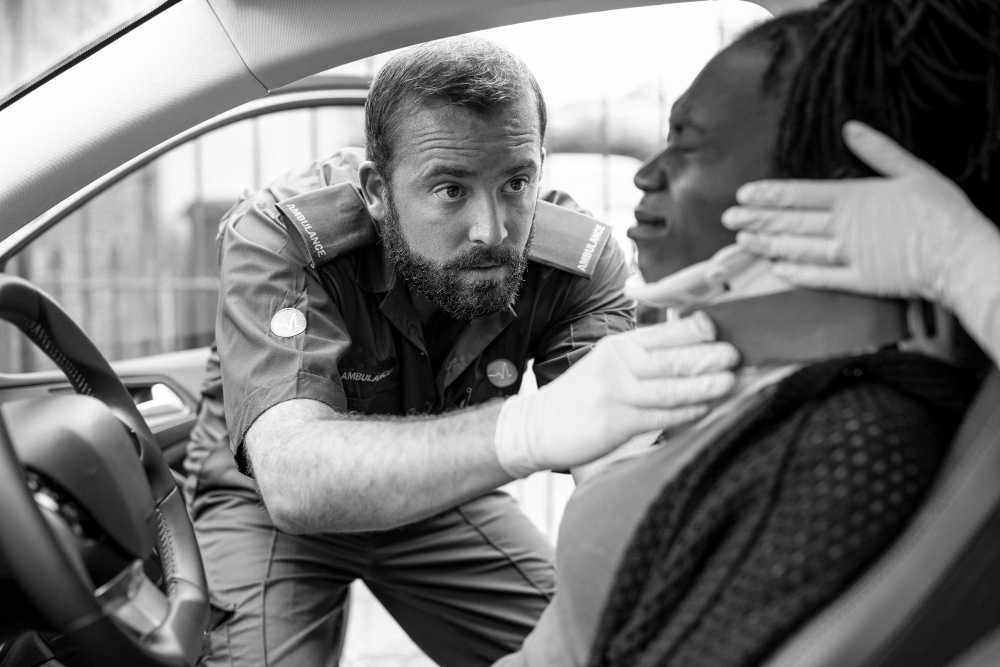
Paramedic Science Degree Guide
Paramedics are often the first healthcare professionals on the scene in emergencies.
Their role is fast-paced, high-stakes, and deeply rewarding. If you're considering studying Paramedic Science, the UK offers a well-established pathway into the profession — and there are also growing opportunities in countries around the world.
Studying Paramedic Science in the UK
In the UK, paramedics are highly trained healthcare professionals regulated by the Health and Care Professions Council (HCPC). Paramedic Science is now a degree-level profession, and demand for skilled graduates is strong across the NHS and beyond.
Course Structure:
-
Typically a BSc (Hons) in Paramedic Science, lasting three years.
-
Combines academic learning with practical training and clinical placements.
-
Students gain experience in ambulance services, A&E departments, and community healthcare.
Modules may include:
-
Anatomy and physiology
-
Trauma and emergency care
-
Mental health and communication
-
Pharmacology
-
Clinical decision-making and leadership
Entry Requirements:
-
A-levels or equivalent qualifications, ideally with a science subject.
-
GCSEs in English, Maths, and Science.
-
Fitness to practice assessment and Disclosure and Barring Service (DBS) check.
-
Some universities may require a driving licence and interview.
Funding:
-
Eligible students in England can access the NHS Learning Support Fund, offering a non-repayable grant of £5,000 per year, plus additional support.
-
Student loans are also available for tuition fees and living costs.
Career Progression:
-
After graduation, you can register with the HCPC as a paramedic.
-
Career options include specialist paramedic roles, critical care, teaching, and further study (e.g., advanced practice or physician associate training).
Studying Paramedicine in Europe
Paramedic education in Europe varies significantly between countries. Some countries follow a university-based model, while others offer vocational training through colleges or emergency services.
Key Points:
-
Ireland offers a four-year BSc in Paramedicine, aligned closely with the UK model.
-
In countries like Germany, Austria, and Switzerland, paramedic training is more vocational, with a focus on technical and practical skills.
-
Scandinavian countries have high standards of pre-hospital care, but programs may require language proficiency.
-
Regulation and titles may vary; for example, some systems separate EMTs from more advanced paramedic roles.
Studying in Europe may appeal to those with language skills or a desire to work in diverse healthcare systems. However, returning to practice in the UK may require additional registration steps.
Studying Paramedicine in Australia and New Zealand
Both Australia and New Zealand offer well-regulated, university-based paramedicine education, making them attractive destinations for international students.
Australia:
-
Offers a Bachelor of Paramedicine (usually 3 years).
-
Regulated by the Paramedicine Board of Australia under the Australian Health Practitioner Regulation Agency (AHPRA).
-
Strong focus on both urban and remote emergency care.
-
Clinical placements with ambulance services are standard.
New Zealand:
-
Offers a Bachelor of Health Science (Paramedicine).
-
Regulated by the Paramedic Council of New Zealand.
-
Similar structure to Australia, with a growing emphasis on primary care and mental health in the curriculum.
Both countries offer excellent opportunities for professional development, but international students should be prepared for competitive entry and visa requirements.
Studying Paramedicine in Canada
Paramedic education in Canada is delivered through a mix of college diploma programs and university degrees, depending on the province.
Pathways:
-
Primary Care Paramedic (PCP): Entry-level diploma program (typically 2 years).
-
Advanced Care Paramedic (ACP): Post-diploma program with a focus on advanced procedures and medications.
-
Critical Care Paramedic (CCP): Highest level, often working in air ambulance or intensive care transport.
-
Some universities (e.g., University of Toronto, University of Alberta) offer paramedicine-related degrees for those aiming for advanced roles or leadership.
Regulation:
-
Paramedics are regulated provincially, so training, certification, and job titles vary across the country.
Note:
-
There is no single national registration body like the HCPC in the UK, which can make transferring qualifications between provinces or internationally more complex.
Studying Paramedicine in the USA
In the United States, paramedicine follows a tiered, certification-based model rather than a single university path.
Education Pathways:
-
Emergency Medical Technician (EMT): Entry-level, certificate-based (often 6 months).
-
Paramedic (EMT-P): More advanced; requires a 1–2 year program, usually at a community college.
-
Some universities offer Associate’s or Bachelor’s degrees in Paramedicine, which are increasingly valued in competitive job markets.
Certification:
-
Certification is granted through the National Registry of Emergency Medical Technicians (NREMT), though each state has its own licensing rules.
-
Some states require degrees, while others accept certification from shorter programs.
Note:
-
Unlike the UK, paramedicine in the US is not universally degree-based, but the trend is shifting toward formal education for advanced practice.
Final Thoughts
Studying Paramedic Science is a bold and exciting choice. The UK offers a structured, respected degree route with strong support for students and graduates. If you're looking abroad, countries like Australia and New Zealand offer high-quality university programs, while in North America and Europe, routes vary and may require deeper research.
When choosing where to study, consider:
-
Language and visa requirements
-
Recognition of qualifications across countries
-
Costs and funding opportunities
-
Your long-term career goals
Wherever you choose to train, being a paramedic is a role that makes a real difference — often in the most critical moments of people’s lives.




